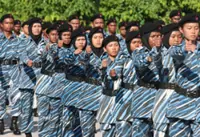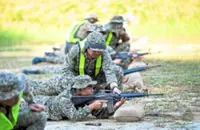KUALA LUMPUR: Individuals selected for the National Service Training Programme (PLKN) 3.0 must attend, with those unable to participate needing to apply for deferment.
National Service Training Department director-general, Maj Gen Datuk Ya’cob Samiran, stated that working individuals must obtain leave from their employers, who must justify any refusal to release employees for PLKN training.
"If employers do not grant permission, there are other processes we will implement," he told reporters during the PLKN 3.0 2025 light weapons shooting training session at the First Battalion, Royal Malay Regiment Shooting Range, Kem Perdana Sungai Besi on Saturday (Feb 8).
Deferment applications are necessary for the second and subsequent series, as only the first series of PLKN 3.0 allows voluntary participation.
Ya’cob explained that the light weapons shooting training is conducted over two days, with 67 trainees participating today and another 53 scheduled for on Sunday (Feb 9).
For Saturday’s session, 40 male and 27 female trainees began training at 9am, supervised by 10 instructors from the Malaysian Army and the Royal Malaysian Air Force.
"Before shooting practice, the trainees are given at least a week of education on weapon management," he said.
Bernama observed that the session started with a 25-metre light weapon calibration exercise, followed by a 100-metre shooting drill using the M16 rifle.
Instructor Capt Muhammad Shawal Mohamad Illias provided a safety briefing to all trainees and attending media personnel before training commenced.
On Jan 12, 120 trainees, comprising 80 men and 40 women aged 18 to 25, were accepted into the first series of PLKN 3.0 for 2025.
The Defence Ministry announced that this figure includes 13 walk-in registrants at the 515 Territorial Army Regiment Camp, representing diverse ethnic, religious, educational, and local backgrounds.
Meanwhile, Ya’cob noted that the use of military fatigues for PLKN 3.0 trainees aligns with practices in other countries and is cost-effective compared to alternative uniforms.
"If we were to use a different type of uniform, the process would take longer, and the cost would be higher," he explained.
He added that trainees are required to return the uniforms after completing their training, allowing future batches to reuse the existing camouflage attire. - Bernama





